Best practices for successful completion system installation and stimulation in shallow wells
Drilling and completing shallow wells can pose unique challenges. With the horizontal length of the well typically much greater than the true vertical depth (TVD), there are risks that need to be considered, to ensure that the lower completion will reach the planned total depth (TD), and the stimulation program can be carried out successfully.
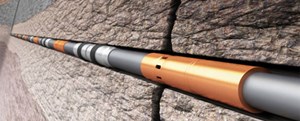
Packers Plus has installed completion systems in more than 20,000 wells worldwide. This extensive run history includes more than 1,200 installations in wells with a TVD of less than 4,000 ft (1,219 m).
The company is at the forefront of the multi-stage fracturing industry, with innovations in downhole technology, manufacturing capabilities and processes, engineering, well design and specialized field engineers. The combination of these innovations and expertise has enabled Packers Plus to supply fit-for-purpose completion systems with a high level of excellence.
SHALLOW WELL BEST PRACTICES
Packers Plus systems have been installed in wells with a TVD as shallow as 1,042 ft (317 m) and as deep as 21,627 ft (6,592 m), Fig. 1. Well depth is an important factor when designing a completion system and ensuring that specific challenges can be overcome during installation.
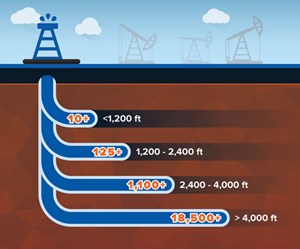
Over the past 20 years, Packers Plus has developed a robust set of best practices to ensure that each system reaches the planned TD. These best practices are particularly important in shallow wells to maintain safe, efficient operations, and minimize unnecessary downtime, as detailed in the following descriptions.
Torque and drag. During the planning phase, our well design engineers use a specialized simulation program to analyze the proposed completion string and understand how it will fit into the designed well path. A tortuosity factor is added to the designed well path to simulate the worst-case scenario and try to account for unexpected doglegs that may occur during drilling. Using the extensive experience from installing downhole tools in more than 20,000 wells, the design engineers will analyze the simulation results and predict whether the system can reach TD, as designed, or if additional options need to be considered.
Open-hole drift run. Once the well has been drilled to TD and the hole is stable, liner installation operations can begin. The first step is completing a clean-out trip with a drift assembly, Fig. 2. This assembly is designed to mimic the stiffest part of the tool string, and it provides a good indication of how the tools will fit into the well. The drift assembly ensures that the well has been drilled to the intended gauge, while also enlarging any tight sections encountered in the wellbore, to allow the completion system to reach TD as safely and efficiently as possible.
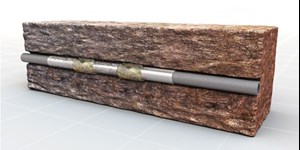
Drilling options. Some operators use slant drilling rigs to start drilling at 45o right from surface, rather than drilling vertical to start and kicking off hundreds of meters below surface in the desired trajectory to transition to the horizontal wellbore. This change in drilling methodology could eliminate the need for a push/pull machine, depending on the well construction and reservoir depths.
Flotation sub. A glass barrier flotation sub allows for the tool string to be run in the well with no fluid below the glass barrier sub, Fig. 3. This creates an air chamber in the liner, which increases the buoyancy of the liner and reduces the effective friction during installation. The reduced overall friction helps the liner reach TD in shallow horizontal wells with the limited available tubing weight.
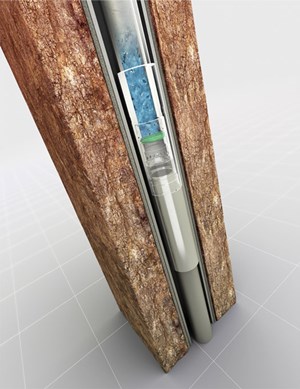
MULTI-STAGE COMPLETION SYSTEM
Combining the best practices listed in the previous section with a multi-stage completion system that is field-proven is another key to installation and stimulation success in shallow wells.
The Packers Plus StackFRAC Multi-Stage Completion System was developed in 2001 and the technology has since been run successfully in a variety of applications globally. From high-pressure multi-stage fracturing and high-temperature geothermal applications to efficient degasification of coal seams, we have worked with operators globally to provide fit-for-purpose solutions for unique challenges and applications.
The multi-stage system is designed for open and cased-hole completions to allow for accurate placement of proppant and acid stimulation treatments, hydrocarbon production, wellbore testing and water shutoff. The completion system includes open-hole packers and ball-activated sleeves that are opened selectively with actuation balls pumped from surface. The tools are available in a variety of sizes, metallurgies, and elastomers, enabling each well design to be customized to maximize the potential of each desired target.
SYSTEM COMPONENTS
Several components are key to the system’s operation, as detailed in the following paragraphs.
Open-hole packer. The RockSEAL® open-hole packer is a hydraulically set mechanical packer. It features a dual-element design to provide effective and reliable zonal isolation in a variety of wellbore conditions and formation characteristics. The packer’s short length and minimum outside diameter provide ease of installation, ensuring deployment to the desired TD.
Ball-activated sliding sleeve. The FracPORT™ sleeve is a ball-activated injection/production port. It is run between packers to allow specific zones of the wellbore to be stimulated. The sleeve also can be closed, using a shifting tool, offering the flexibility to open and test specific zones, and shut off production from undesired zones.
Hydraulic sleeve. The Hydraulic FracPORT sleeve is a hydraulically activated injection/production port, used as the first stage of each StackFRAC system. The Hydraulic FracPORT sleeve opens at a specific tubing pressure, eliminating any need for intervention to begin pumping operations.
Circulating sub. A Toe Circulation Sub (TCS) is installed at the toe of the system to control the flow between the completion tool string (liner) and the annulus. The TCS is kept open while running the liner in the well to allow for circulation of fluid through the liner. Once the liner has reached the desired TD, a ball is pumped from surface to close the TCS. With the TCS closed, the packers can be set, and the hydraulic sleeve can be opened, using only tubing pressure.
TWO SHALLOW WELL CASE STUDIES
Shallow well installation with push/pull machine. Two wells completed for an operator provided a unique challenge, due to their shallow TVD of only 1,050 ft (320 m) and a TD of 2,297 ft (700 m), Fig. 4. With the horizontal length of the well greater than the TVD, there were risks that needed to be overcome to ensure that the five-stage completion system could be installed to the planned TD.
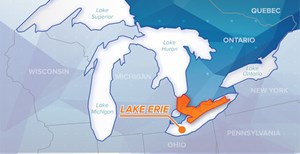
Careful pre-job planning was conducted to find a solution that would provide the operator with confidence that the liner would reach TD. A risk analysis was completed to minimize or eliminate steps that added risk to the operation. A series of torque and drag simulations were completed, which showed the lower completion would require more weight than just the weight of the liner to reach TD. A push/pull machine was put in place, allowing the drilling rig to add additional weight by pushing from surface. This proved to be effective. The last seven joints were pushed into the hole to reach the planned TD, as expected from the torque and drag simulation.
Once the completion system was installed, and the open-hole packers were set, the hydraulic fracturing stimulation began. The hydraulic stimulation was pumped continuously, allowing the operator to take full advantage of the efficiencies added by the StackFRAC completion system. All five stages were pumped successfully in less than 4 hr.
Degasification of a shallow coal seam. An operator required assistance with the degasification of a coal seam and reducing the time between drilling the well and being able to safely mine the coal. Multiple wells were required, due to the large area that needed degasification before mining operations could begin. To minimize drilling costs, the operator wanted to install the maximum number of stages in a horizontal wellbore to degasify the greatest area possible.
The service firm and the operator worked together to design the depth and the number of stages in the well, to ensure that the completion could reach TD, based on the torque and drag simulation, Fig. 5.
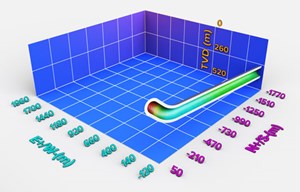
A 23-stage system was installed in the well, which targeted a coal seam that had a TVD of 1,260 ft (385 m) and a TD of 6,724 ft (2,050 m). The system was installed successfully, giving the operator confidence to continue using the StackFRAC system to realize both cost-savings and improve safety at the mine site.
CONCLUSION
Drilling and completing shallow wells can pose unique challenges. With the horizontal length of the well typically much greater than the TVD, there are risks that need to be considered, to ensure that the lower completion will reach the planned TD.
Packers Plus has installed completion systems in more than 20,000 wells worldwide, including more than 1,200 installations in wells with a TVD of less than 4,000 ft (1,219 m). Through this experience, a robust set of best practices has been developed to ensure that each system reaches the planned TD. These best practices are particularly important in shallow wells to maintain safe, efficient operations, and minimize unnecessary downtime. Some of the best practices include torque and drag analysis; open-hole drift run; wellbore drilling techniques; and flotation sub implementation.
As a completion technology company, Packers Plus is committed to providing high-quality solutions for a variety of applications for wells at every depth, including the shallow-well solutions described in this article.
- Coiled tubing drilling’s role in the energy transition (March 2024)
- Shale technology: Bayesian variable pressure decline-curve analysis for shale gas wells (March 2024)
- Using data to create new completion efficiencies (February 2024)
- Digital tool kit enhances real-time decision-making to improve drilling efficiency and performance (February 2024)
- E&P outside the U.S. maintains a disciplined pace (February 2024)
- U.S. operators reduce activity as crude prices plunge (February 2024)
- Applying ultra-deep LWD resistivity technology successfully in a SAGD operation (May 2019)
- Adoption of wireless intelligent completions advances (May 2019)
- Majors double down as takeaway crunch eases (April 2019)
- What’s new in well logging and formation evaluation (April 2019)
- Qualification of a 20,000-psi subsea BOP: A collaborative approach (February 2019)
- ConocoPhillips’ Greg Leveille sees rapid trajectory of technical advancement continuing (February 2019)


